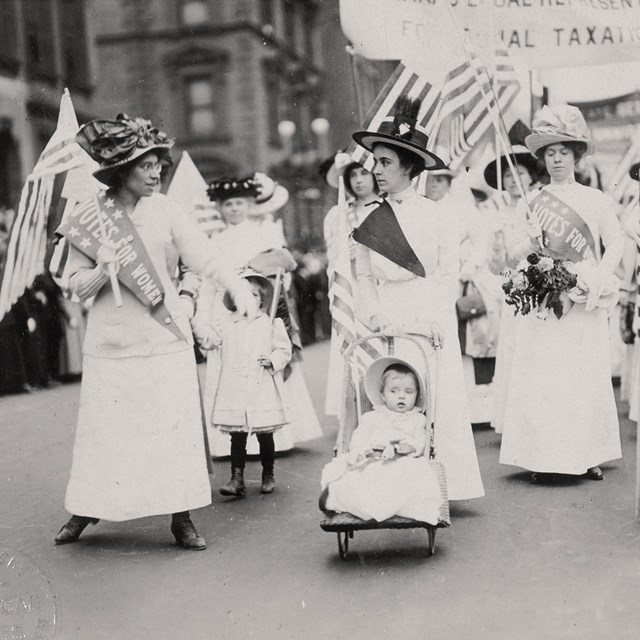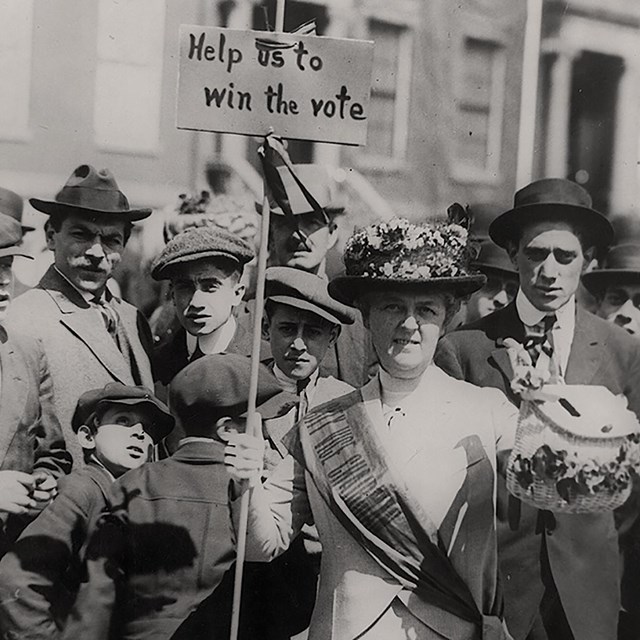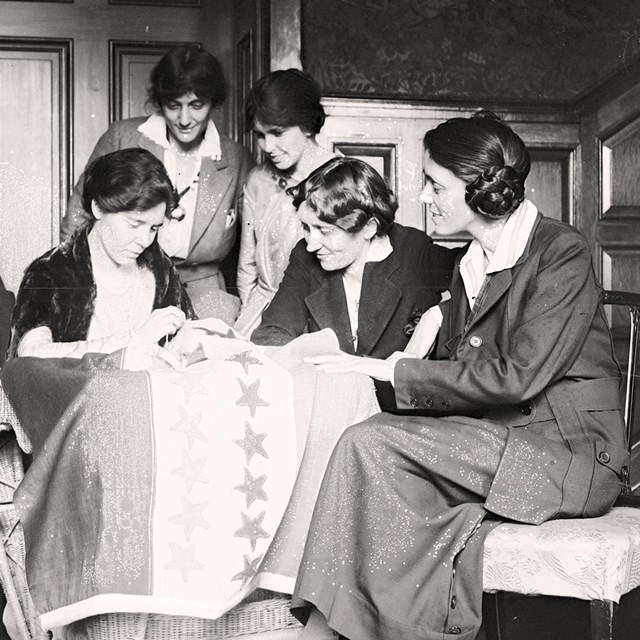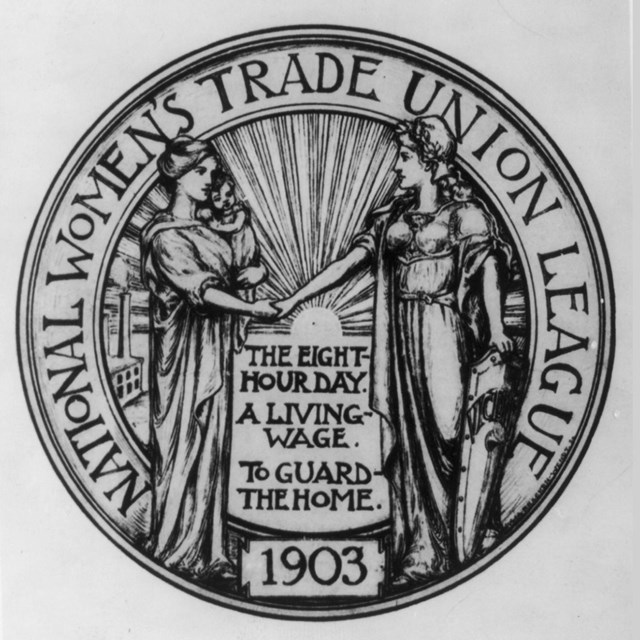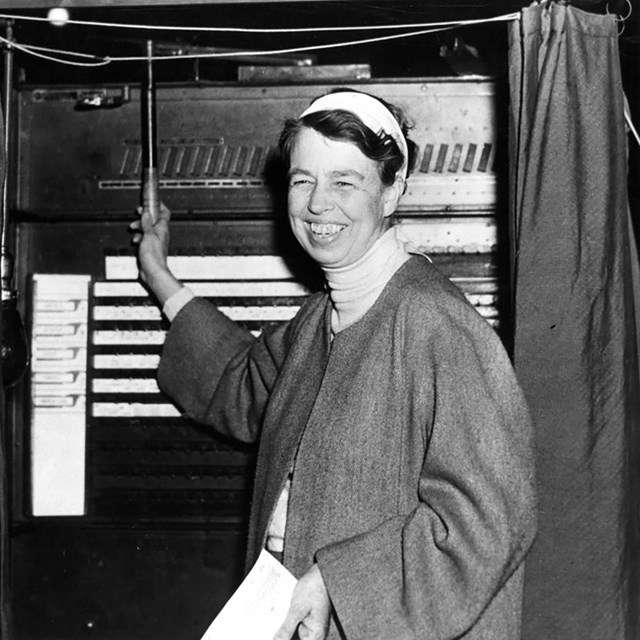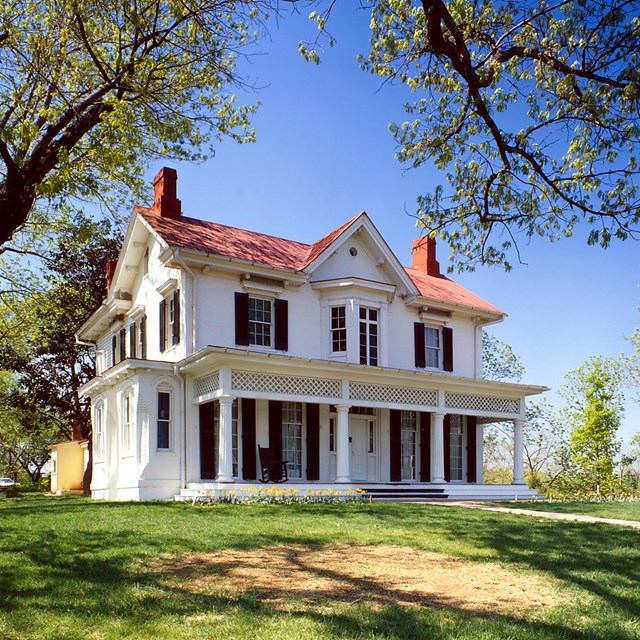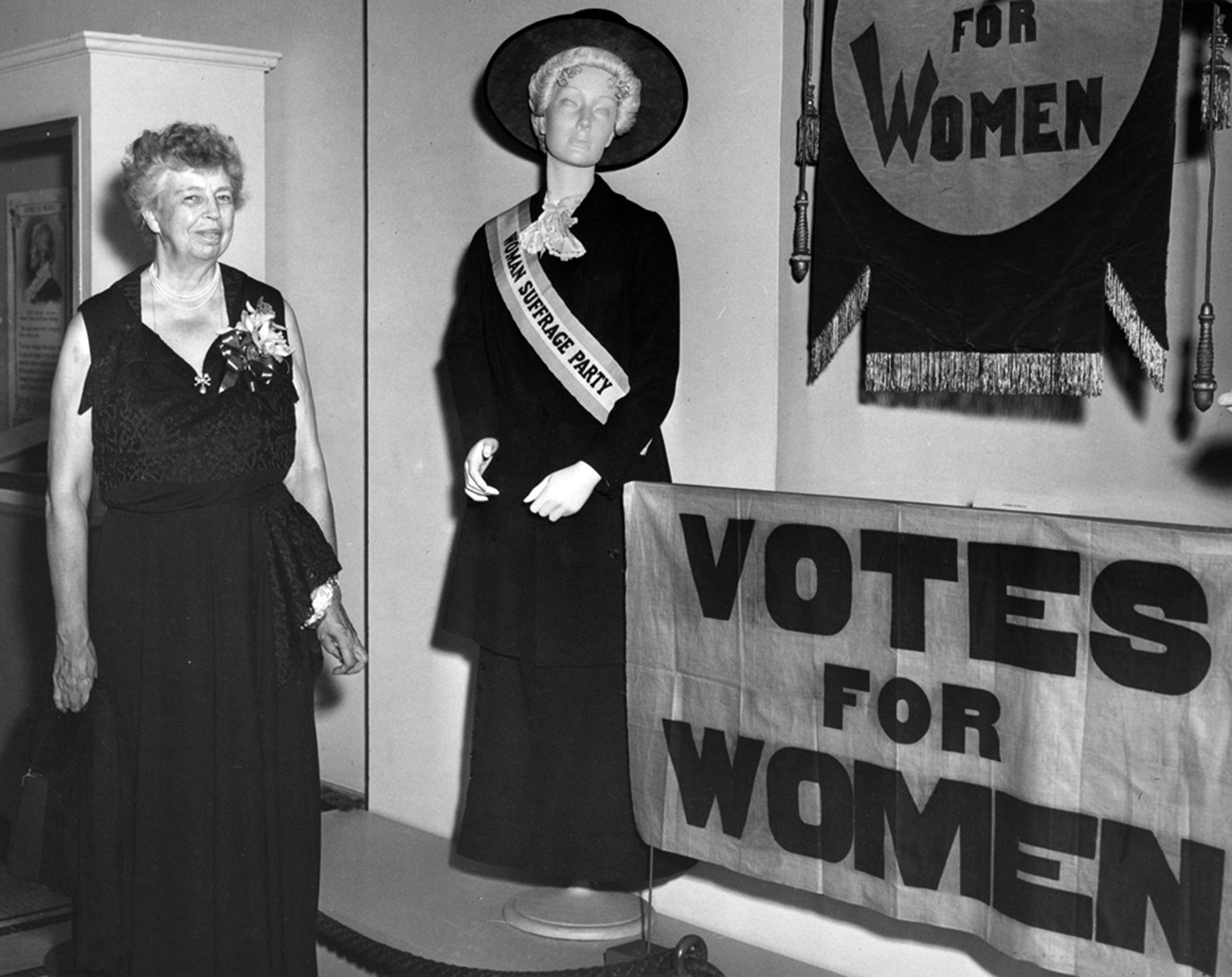
New-York Historical Society Photo This year, we join the nation in commemorating the centennial of women's right to vote. Looking back on her political development, Eleanor Roosevelt wrote that she had her “first contact with the suffrage movement rather late.” In fact, she did not consider herself a suffragists until 1911, when her husband Franklin D. Roosevelt, then a state assemblyman in New York, came out for women’s right to vote. It was only in the 1920s that Eleanor Roosevelt became fully involved in women’s rights. By mid-decade Roosevelt played a central role in a network of women working to build new footings in government agencies, political parties, and elected offices. Hardly the end of the struggle for diverse women's equality, the Nineteenth Amendment became a crucial step, but only a step, in the continuing quest for more representative democracy. Val-Kill tells the story of those early efforts and Eleanor Roosevelt's legacy in what followed women's right to vote. Background on the 19th Amendment
Legacies of Women's Suffrage
|
Last updated: August 19, 2020

